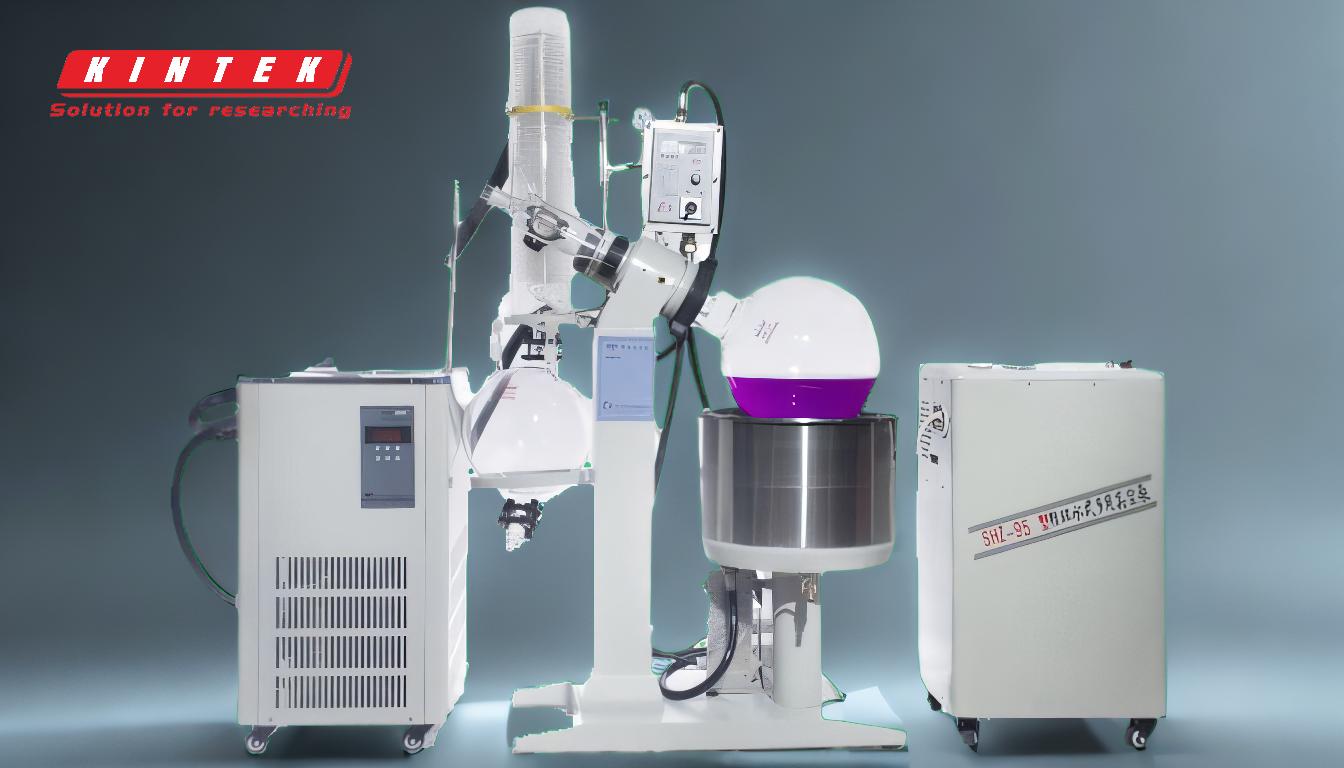Short-path distillation under reduced pressure is a specialized distillation technique used to separate and purify compounds, particularly those that are heat-sensitive or have high boiling points. It operates by heating a mixture in a boiling flask under reduced pressure, which lowers the boiling points of the components, allowing them to vaporize at lower temperatures. The vaporized compounds travel a short distance to a condensing surface, where they are cooled and condensed back into liquid form. This method is highly efficient for isolating specific fractions of a mixture, such as cannabinoids, essential oils, or other high-value compounds, and is widely used in industries like pharmaceuticals, food, and cannabis extraction.
Key Points Explained:

-
Definition and Purpose of Short-Path Distillation:
- Short-path distillation is a fractional distillation technique where the distillate travels a short distance (often just a few centimeters) from the boiling flask to the condensing surface.
- It is performed under reduced pressure, which lowers the boiling points of the compounds, making it ideal for heat-sensitive materials or those with high boiling points.
- The primary purpose is to separate and purify specific components from a mixture, such as cannabinoids, essential oils, or fatty acids.
-
Key Components of the Apparatus:
- Boiling Flask: Contains the mixture to be distilled and is heated to vaporize the components.
- Magnetic Stirrer: Ensures even heating and prevents localized overheating.
- Condensing Coil or Surface: Cools the vaporized compounds, causing them to condense back into liquid form.
- Fractionating Tube: Further separates the condensed liquid into different fractions based on their boiling points.
- Multi-Position Receiver: Collects the separated fractions in separate flasks.
-
Process Steps:
- Heating: The mixture is heated gradually in the boiling flask, with the temperature controlled to target specific boiling points of the desired components.
- Reduced Pressure: A vacuum is applied to lower the atmospheric pressure, reducing the boiling points of the compounds and enabling distillation at lower temperatures.
- Vaporization and Condensation: The vaporized compounds travel a short distance to the condensing surface, where they are cooled and condensed into liquid form.
- Fraction Collection: The condensed liquid is collected in separate flasks based on its weight and boiling point, allowing for precise separation of components.
-
Advantages of Short-Path Distillation:
- Efficiency: The short distance between boiling and condensing surfaces minimizes the loss of volatile compounds and ensures high recovery rates.
- Precision: The ability to operate under reduced pressure allows for the separation of compounds with very close boiling points.
- Suitability for Heat-Sensitive Materials: The lower operating temperatures prevent thermal degradation of sensitive compounds.
- Scalability: The process can be scaled up for industrial applications while maintaining high purity levels.
-
Applications:
- Pharmaceutical Industry: Used to extract and purify active pharmaceutical ingredients (APIs) and other high-value compounds.
- Food Industry: Employed for the extraction of essential oils, flavors, and fragrances.
- Cannabis Industry: Widely used to isolate cannabinoids like CBD and THC from hemp or cannabis plants.
- Chemical Industry: Utilized for the purification of fatty acids, polyurethane, and other high-boiling-point materials.
-
Operational Parameters:
- Pressure: Typically operates under very low pressures, often as low as 0.001mbar, to achieve efficient separation.
- Temperature: Controlled heating is critical to ensure that only the desired components are vaporized.
- Distance: The short distance between the boiling and condensing surfaces (usually less than 1mbar) is a defining feature of this technique.
-
Challenges and Considerations:
- Equipment Cost: The specialized apparatus required for short-path distillation can be expensive.
- Maintenance: The system must be carefully maintained to ensure consistent performance, particularly the vacuum and cooling systems.
- Operator Skill: Requires skilled operators to manage the precise control of temperature and pressure.
In summary, short-path distillation under reduced pressure is a highly effective method for separating and purifying compounds, particularly those that are heat-sensitive or have high boiling points. Its precision, efficiency, and adaptability make it a valuable tool across various industries.
Summary Table:
| Aspect | Details |
|---|---|
| Purpose | Separate and purify heat-sensitive or high-boiling-point compounds. |
| Key Components | Boiling flask, magnetic stirrer, condensing coil, fractionating tube, receiver. |
| Process Steps | Heating, reduced pressure, vaporization, condensation, fraction collection. |
| Advantages | High efficiency, precision, low thermal degradation, scalability. |
| Applications | Pharmaceuticals, food, cannabis extraction, chemical purification. |
| Operational Parameters | Low pressure (0.001mbar), controlled temperature, short travel distance. |
| Challenges | High equipment cost, maintenance needs, skilled operators required. |
Interested in enhancing your compound separation process? Contact us today to learn more about short-path distillation solutions!











